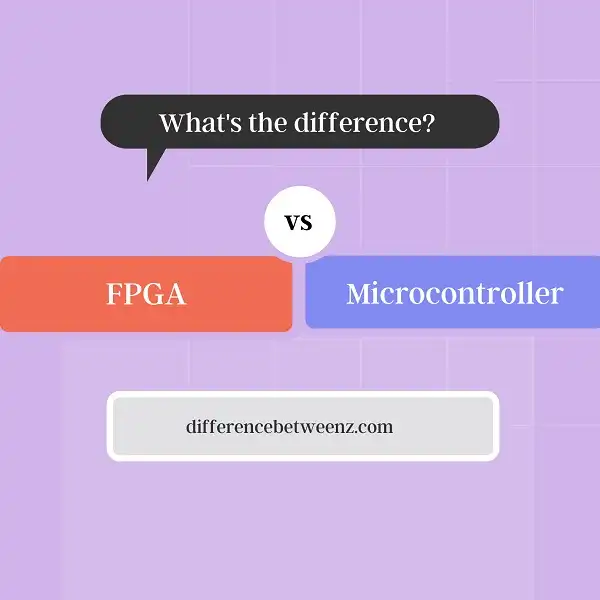Microcontrollers and FPGAs are both devices used for implementing digital logic designs, but they have some important differences. This article will explore those differences, and explain why you might choose one over the other for a given application.
What is FPGA?
FPGA is an acronym for field-programmable gate array. FPGAs are semiconductor devices that are used to implement digital logic circuits. FPGAs can be programmed to perform a variety of tasks, making them incredibly versatile and powerful. FPGAs are used in a wide range of applications, including communications, networking, and audio/video processing. FPGAs typically contain a large number of logic gates, which can be configured to perform various functions. FPGAs are often used to create custom hardware designs that would be too expensive or difficult to implement with traditional ASICs (Application-Specific Integrated Circuits). FPGAs are also used in prototyping and development, as they allow designers to quickly and easily test new ideas and concepts.
What is a Microcontroller?
Microcontrollers are small, self-contained computers that can be used to control a wide variety of electronic devices. Unlike traditional CPUs, which are designed to perform a single task or a small set of tasks, microcontrollers are designed to handle a wide range of tasks. This makes them well-suited for applications where space is limited, such as in embedded systems. Microcontrollers typically contain a central processing unit (CPU), memory, input/output ports, and other peripherals on a single chip. They are often used in applications where low power consumption is important, such as in battery-powered devices. Microcontrollers can be found in a wide variety of electronic devices, including automobiles, appliances, toys, and office equipment.
Difference between FPGA and Microcontroller
FPGA (Field-Programmable Gate Array) and Microcontroller are two widely used terms in the electronics industry. FPGA is a kind of integrated circuit that can be programmed to implement various logic functions. On the other hand, microcontrollers are single-chip computers that come with built-in memory and I/O peripherals. FPGAs are used in applications where a high degree of flexibility is required. For example, FPGAs can be used to create custom processors or accelerator boards. Microcontrollers are used in applications where low cost and low power consumption are important considerations. For example, microcontrollers are often used in automotive applications, where they control engine management systems. FPGAs typically consume more power than microcontrollers, but they offer higher performance.
Conclusion
The main difference between FPGAs and microcontrollers is that FPGAs are programmable, while microcontrollers are not. This means that you can change the functionality of an FPGA after it has been manufactured, while a microcontroller’s function is set at the time of manufacture. For this reason, FPGAs are often used for more complex tasks than microcontrollers. If you need a device that can be reprogrammed easily to handle a variety of tasks, an FPGA is likely the better option. However, if you need a simpler device that will only be performing one task, a microcontroller may be more appropriate.


